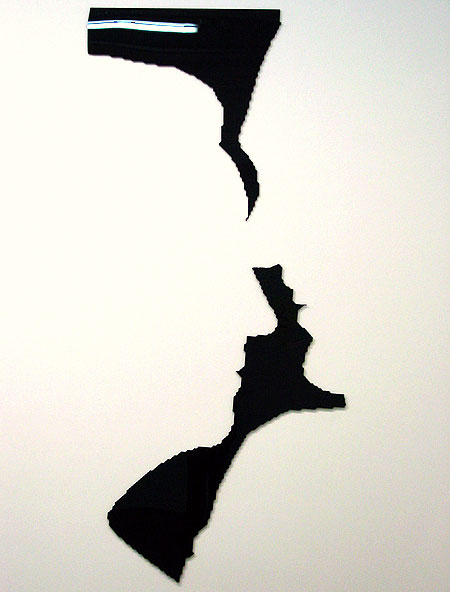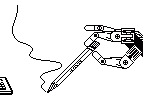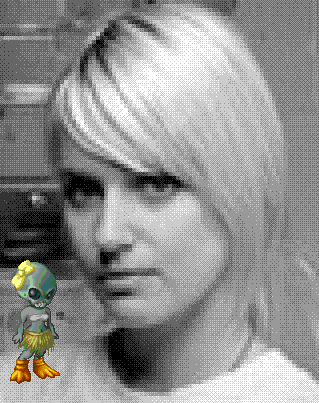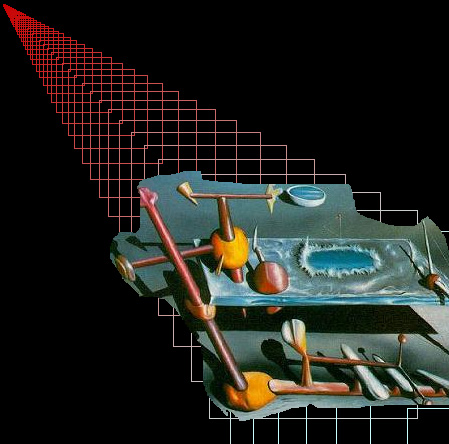Two recent posts from Petra Cortright:
Crispin Creeper. A YouTube of a TV commercial for a 900 number for kids. You talk to a demon who tells gross jokes and plays disgusting sound effects. As for the commercial itself, if Clement Greenberg were writing "Avant Garde and Kitsch" today he'd be stymied by this. [forgot to mention this is a "freddy freaker clone," per guthrie]
This hand [5 MB .GIF] is what we should want more of in "computer art" (from her LJ page). Visually seductive, failing in intriguing, destructively random ways. It slightly recalls the architecture of Coop Himmelblau, 3D form based on abstract expressionist smasmodic gestures, yet clinging desperately to the Cartesian grid. Instead of Frank Gehry's kitschy "artistic" curves you have the found curves of a stock videogame hand (what is mostly accepted as "computer art.") The myriad of patterns within the hand's polygonal facets suggests a mise en abyme of Op art, constantly snapping back to a contoured surface. Last, there is no mystification because the program is included in the screen shots.




